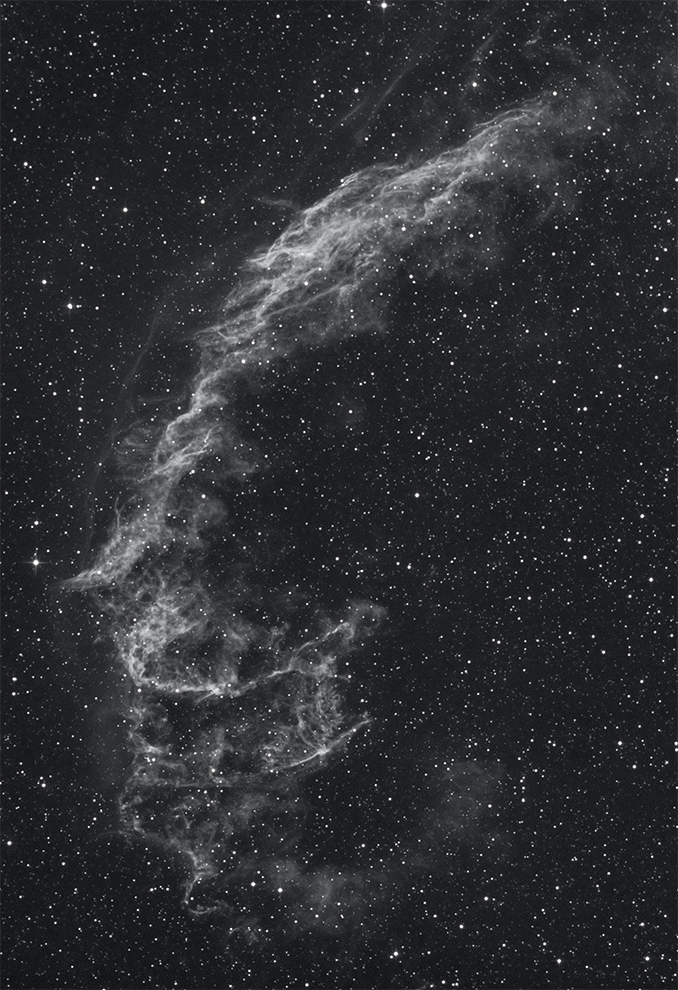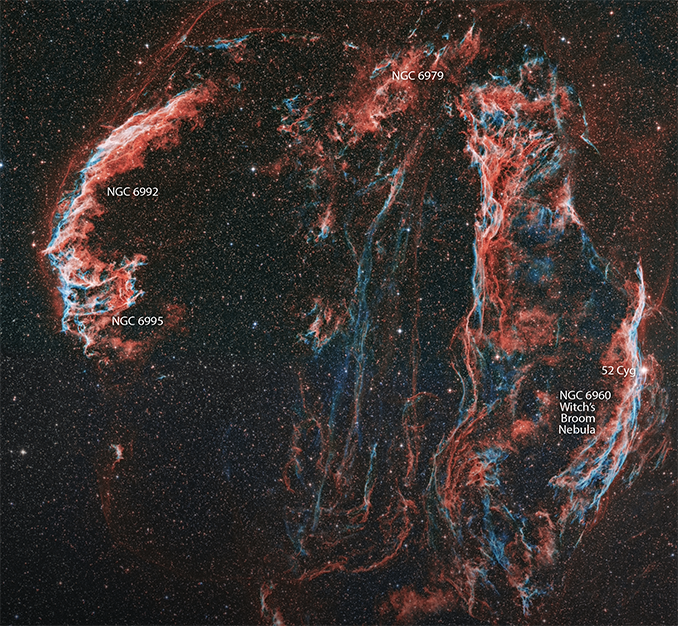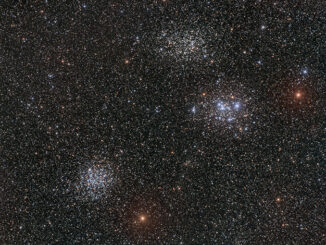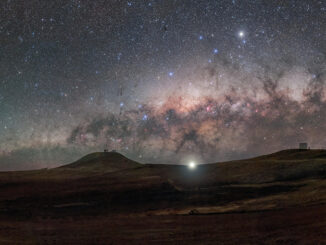The Veil Nebula in Cygnus is an iconic deep-sky target, a ‘must-see’ object that rivals or exceeds anything else you’ll likely to observe this summer. Along with the Crab Nebula (Messier 1), in Taurus, it is perhaps the best example of a supernova remnant – the expanding shell(s) of material ejected from the titanic explosion(s) that represent the ultimate fate that awaits massive stars. The Veil is the shredded remains of a star that blew itself out of existence around 9,000 years ago, which have since expanded into an intricate and beautiful structure that dwarfs the Crab Nebula on the sky, spanning a humongous three degrees.
Until the introduction of narrowband filters such as the ubiquitous UHC and O-III filters, the Veil was the exclusive domain of experienced, large-telescope owners. Today, under a dark countryside sky, a small- to moderate-aperture telescope can reveal portions of the Veil’s ancient and wispy tendrils.
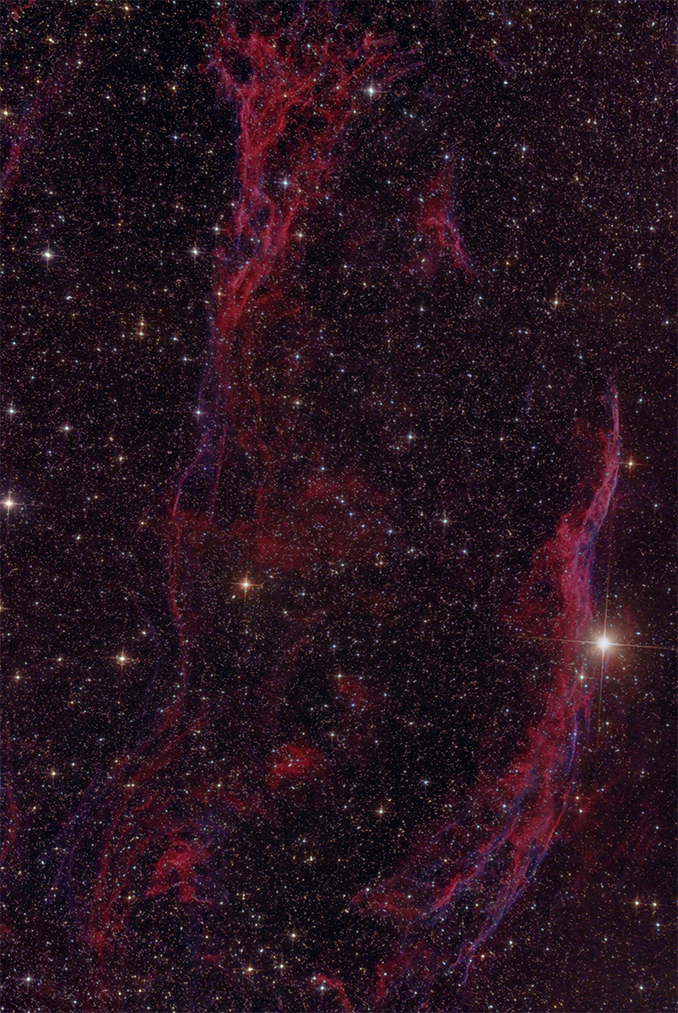
How to observe
The Veil Nebula is best hunted down under a dark, transparent and moonless night. A good time is towards the end of August, when receding twilight returns some modicum of darkness to UK skies and the Moon is new. The Veil lies in southern Cygnus, two to three degrees south of magnitude +2.5 epsilon (ε) Cygni. From UK shores it is superbly placed, culminating high overhead at around 11pm BST at the end of August.
The Veil Nebula is so large that it boasts several NGC designations: the more easterly arc, designated NGC 6992/6995 with the former number marking its one-degree-long main section, is the brightest part of the nebula, but beginners seeking their bearings might be better served going first for the westerly arc that lies 2.5 degrees to the south-east, its position handily marked by the moderately bright star 52 Cygni (magnitude +4.2). A 130–150mm (five- to six-inch) wide-field telescope operating at a low power with a UHC or O-III filter should bag it, but there’s a substantial glare from 52 Cyg to contend with. It’s formally designated NGC 6960, but nicely nicknamed the Witch’s Broom Nebula. The most northerly lying and more challenging central part of the Veil is known as NGC 6979.
The easterly arc (NGC 6992) has been seen through 10 × 50 binoculars, so on a fine, moonless night, why not try to observe the Veil through whatever optical aid you have to hand. You might be pleasantly surprised at the view.
